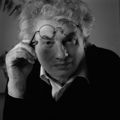Mario Botta

Biographical notes
Mario Botta was born on 1 April 1943 in Mendrisio, Ticino. After doing an apprenticeship in Lugano, he attended the “liceo artistico” (artistic high school) in Milan and continued his studies at the University Institute of Architecture in Venice, where he graduated in 1969 under supervisors Carlo Scarpa and Giuseppe Mazzariol. During his time in Venice, he had the opportunity to meet and work with Le Corbusier and Louis I. Kahn.
After returning to Ticino in 1970, he opened his first practice in Lugano, a city where he would stay for the next forty years until moving to Mendrisio in 2011.
Throughout his career, he has always combined his architectural work with teaching and outreach activities through lectures, seminars and courses held at schools of architecture in Europe, Asia, the United States and Latin America.
When the Università della Svizzera Italiana was established in 1996, he was involved in founding the Academy of Architecture in Mendrisio, where he taught until 2018 and was granted the title of Emeritus Professor in 2019.
His work has been honoured with major international awards and numerous exhibitions. Following the construction of single-family houses in Canton Ticino, he went on to design all kinds of buildings including schools, banks, administrative centres, libraries, museums and places of worship.
His works include: the Watari-um art gallery in Tokyo; the MoMA Museum of Modern Art, San Francisco; the Cathedral of the Resurrection in Evry; the Tinguely museum in Basel; the Cymbalista Synagogue and Jewish Heritage Centre in Tel Aviv; the municipal library in Dortmund; the Dürrenmatt centre in Neuchâtel; the MART museum in Trento and Rovereto; the Kyobo tower and the Leeum museum in Seoul; the Tata Consultancy Services administrative buildings in New Delhi and Hyderabad; the church of Papa Giovanni XXIII in Seriate; renovation of La Scala Theatre in Milan and the current extension project; the Church of the Santo Volto in Turin; the Tschuggen Berg Oase wellness centre in Arosa; the Bechtler Museum in Charlotte; the former Campari headquarters and residences in Sesto San Giovanni; urban redevelopment of the former Appiani area in Treviso; the Twelve at Hengshan hotel in Shanghai; the Garnet chapel in the Zillertal, Austria; the library and museum for the Tsinghua University campus in Beijing; the Fiore di Pietra restaurant on Monte Generoso; the Architecture Theatre in Mendrisio; the Fortyseven° wellness centre in Baden; the Shrine of Our Lady of the Rosary of Namyang.
close





